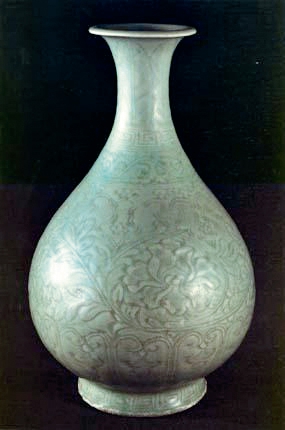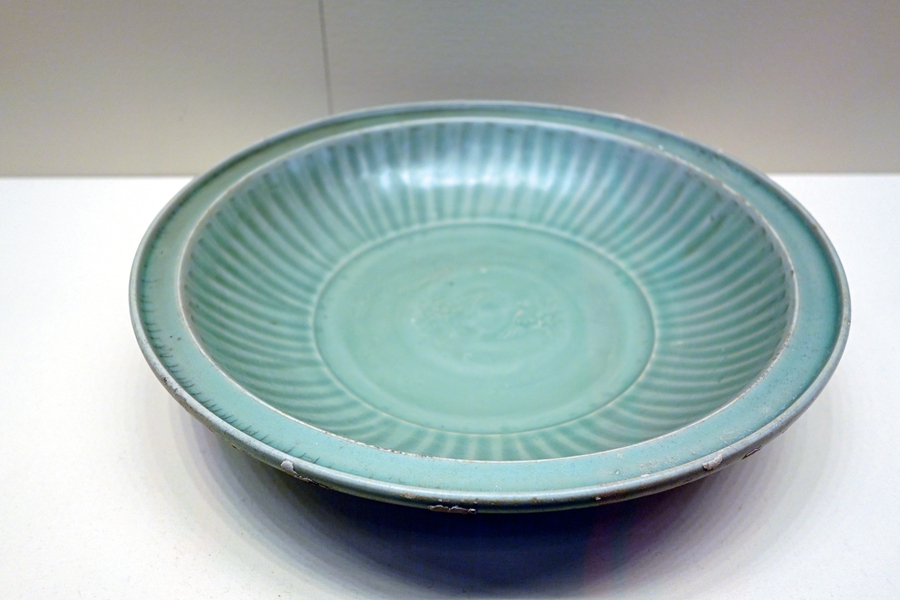Longquan Celadon
China Today by Song Xiaoyan,April 20, 2018 Adjust font size:

Longquan celadon vase
Housed in Anhui Museum, the body of the vase is white and glaze is opaque. With jade-like glaze, the vase has a banana leaf pattern on its neck, interlocking peony and petals of lotus pattern on its belly. It features an elegant and solemn style and exquisite incised design. It is a treasure of Longquan celadon.
Besides the jade-like glazing color, the Longquan celadon also features exquisite decorations. The Longquan celadon include wares such as bowls, plates, basins, saucers, cups, pots, tins, tea sets, watering cans, brush pots, and vases. Most celadon wares feature a heavy and compact body, on which there are incised decorations of various patterns. In addition, the potters make crazing patterns themselves, adding brilliance to the wares’ present splendor. As a type of very fine porcelain in the Chinese porcelain history, the Longquan celadon has been adored by porcelain lovers around the world. The craftsmanship of making Longquan celadon has been passed down through generations. Why are people so obsessed with the Longquan celadon? The reason is closely related to the Chinese people’s aesthetic preferences and the traditional Chinese culture. The color of the glaze resembles that of jade. In ancient China, people often use jade as a metaphor for good virtues. The glaze of Longquan celadon symbolizes good virtues that the Chinese people have been cherishing and pursuing, and its color is low-profile, with a jade-like gloss, corresponding to most Chinese people’s character — most Chinese are introverted.
The Longquan celadon has been popular in both China and the world. Today, the Longquan celadon wares are often seen in famous museums around the world. Actually there is a story about its English name as celadon. L’Astrée, a novel by French writer Honoré d’Urfé, was adapted for theater, which turned out to be a great hit. Celadon, the hero in the play, wore a beautiful blue cloak, which became fashionable at that time in Paris. During the same period, the Longquan porcelain was quite popular among upper classes in France. As the porcelain’s color looks similar to Celadon’s cloak, people name it as Longquan celadon, and the term has been widely adopted around Europe.
Due to the increasing popularity of the Longquan celadon, kilns for making Longquan celadon wares were also established in Jiangxi and Fujian provinces, forming a large Longquan kiln cluster. As representative works of Chinese porcelain, the Longquan celadon wares have been exhibited around the world, allowing people outside China to appreciate the exquisite artwork of the ancient Chinese civilization. In modern days, the Longquan celadon, with its jade-like beauty and delicate craftsmanship, enriches the treasury of arts of the world.
Song Xiaoyan is a course planner of antique chinaware at the Ancient Porcelain Countyard Museum.

